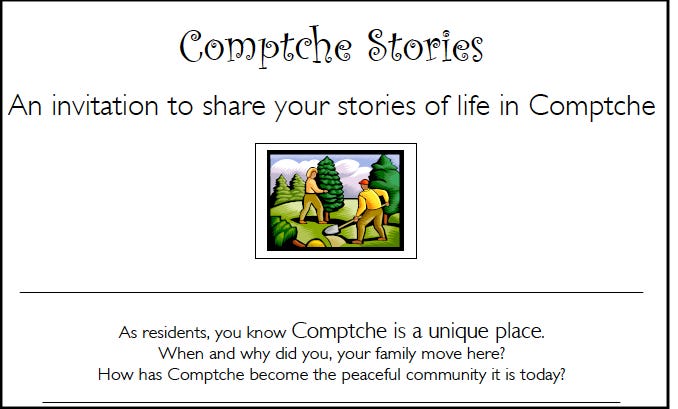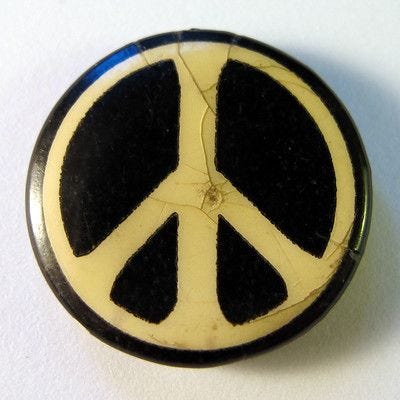Following the period called literature review, the findings of which I discussed in Chapter 1 of this series, I returned to my former hometown for a year (2010-2011) to conduct a field study. I was particularly interested in how the community had maintained the resilience and cohesion established by the late 1970s.
During fieldwork there were two ways I generated primary data (original material) for this study. One is a method called participant observation. The other way I gathered information was from respondents through storytelling, interviews, and responses to an ethnographic survey I designed. My survey first had to win approval from the university’s Human Subjects Review Board. I distributed my participant questionnaire in 2011, and I’ll include this instrument in an upcoming post.
Using storytelling as data, ethnographers have to acknowledge loss of memory and distortion. So, given that memory is subjective I looked for points of consensus among stories, incidents, events, institutions, and participants. I was looking for common ground.
A major point of consensus is that all respondents noted the “fire department’s annual benefit chicken dinner” as a community event in which they participated regularly. Consequently, the Comptche Volunteer Fire Department (CVFD) is an important element of this ethnography.
On a larger scale, points of consensus can be found in the historical patterns of national and regional events. For example, the back-to-the-land movement of the 1970s coincided with the “turnaround migration” trend that began in the 1970s, marking the first time in the United States that “rural areas experienced a net flow of population relative to urban areas,” (Smith and Krannich 2000).
In the way that generalities can be seen in the particulars, historical cycles are a way to view the transformation of Comptche in the Seventies.
Working with respondents, whom I also refer to as participants, was the most personally satisfying aspect of this study. Their stories were as engaging and enjoyable as the re-acquaintance process. Many of these interviews were my first adult conversation with the grownups of my youth.
It was an honor and a responsibility to receive these stories. The amount of time respondents spent on the questionnaire reflects their interest and thoughtful contribution. A number of enthusiastic respondents assisted in locating additional participants.
Recruiting Respondents
Recruitment began with the flyer posted above. I mailed it to a friend in Comptche in late 2010 to post on the bulletin board at the Post Office—another significant location in this ethnography. After the first few phone calls made by way of the flyer, I began to hear from interested people through a project-dedicated e-mail address.
Using social media to locate and network with participants, I created a project page on Facebook: Comptche Stories: Ethnography of Change in a Rural Community.
Having an Internet presence enabled me to find and interact with people who had lived in Comptche in the 1970s. I sent my project questionnaire to potential participants. As research progressed, I posted early findings on Facebook, including graphs of quantitative data from the questionnaire, such as “Household Amenities”.
Living on site for a year enabled me to interview additional residents and conduct follow-up queries. I was encouraged many times to interview two particular old-timers. “They have so many great stories about the hippies,” said one participant. “I have invited them,” I explained. “They’re not interested.” Some consider the absence of these two particular old timers with deep Comptche roots to be a glaring omission. One did not respond to my e-mail. The other, when his wife put him on the phone after I had missed him a few times, asked who else I had talked to. After I ran down the list of his fellow old-timers, he said, “Well I don’t have anything to add to what they would ‘a told you.” For me, however, the important consideration is that these men were invited.
Data was collected through the questionnaires from 28 participants—current and former residents who lived in Comptche during the 1970s. The population of Comptche in 1977 was 454; six percent of that population participated in this study in 2011.
Respondents ranged in age from 44 to 80 in 2011—the year questionnaires were answered. This means that in 1970, 41 years ago, these same people were between 3 and 41 years of age. Half of the participants were children or youth during the Seventies. Twelve were men and 16 were women. Eleven classified themselves as an old-timer in the Seventies, and 17 classified themselves as newcomers.
I asked respondents which type of person they identified with in 1970s Comptche: “old-timer” or “newcomer”. I chose these terms because they are neutral, avoiding the stereotyped labels of straight or hippie.
In order to generate memories about the era of conflict, I asked respondents to list the slang terms for “the Other” (Table 1) during the Seventies. Although I want to emphasize that these terms are no longer used, I include them as evidence of conflict. Today residents refer to one another with respect, the terms in Table 1 exist in the past.
An important point was made by one newcomer participant, who stated emphatically she was not a hippie and never was a hippie. She prefers considering herself a back-to-the-lander. Another participant said she has never stopped being a hippie.
A newcomer participant said she appreciated the “opportunity to set the record straight.” Each person holds a piece in the story of the whole, in the sense that each individual is an integral part of the whole.
All research participants agreed that we lived through a unique shared experience in Comptche during the 1970s. Their contribution to this study validates that shared experience. Some respondents said it was gratifying to know they were sharing their own perspective and personal experience from this transformative period of time in a specific place.
Up next: Research Instruments: The Questionnaire
References used in this post:
Comptche Area Citizens Advisory Committee, 1978. Comptche Conservation Plan
Durkheim, Emile 2001 [1912]. The Elementary Forms of Religious Life.
Okely, Judith & Helen Callaway, editors, 1992. Anthropology and Autobiography.
Smith, Michael D. & Richard S. Krannich, 2000. Culture Clash Revisited: Newcomer and Longer-Term Residents’ Attitudes Toward Land Use, Development, and Environmental Issues in Rural Communities in the Rocky Mountain West.
Spradley, James P., 1980. The Ethnographic Interview.






